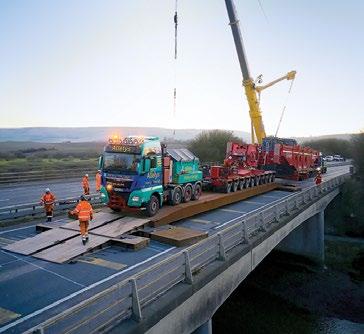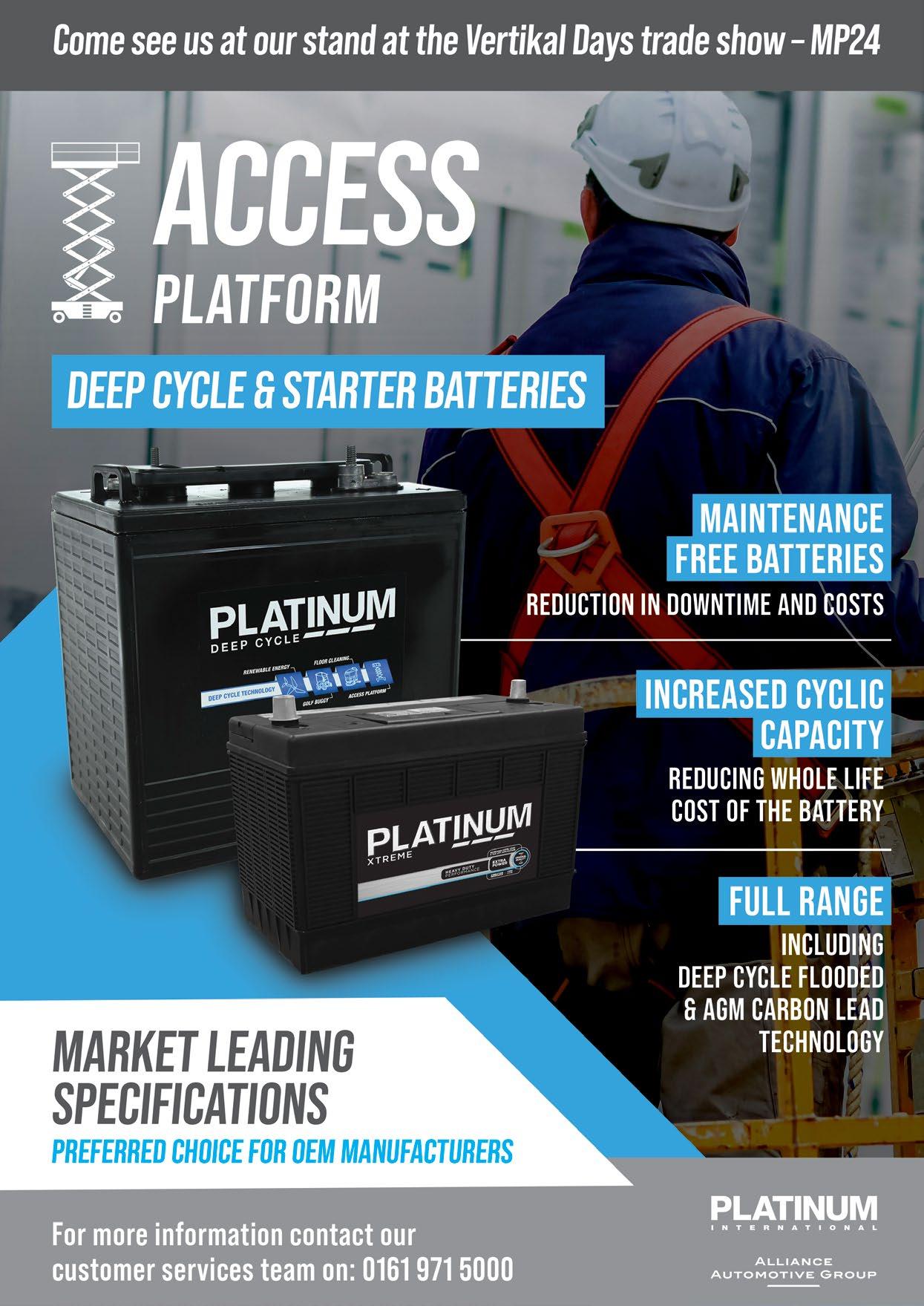
5 minute read
In-house solutions
In-house solutions
UK based heavy lift specialist Allelys provides specialist lifting, heavy haulage, industrial installations and logistics services along with specialist rental equipment, primarily to customers in the UK. Mark Darwin met managing director David Allely and his team at its Warwickshire headquarters to find out more…

Established more than 60 years ago Allelys has consistently invested, evolved and grown to maintain its status as one of the leading UK players in the heavy lift and shift market. Its yard in Studley has doubled in size to 12 acres over the years as have the facilities, including new warehousing and fully equipped workshops. The business has annual revenues of around £20 million and employs180.
“As we have grown so has our arsenal of equipment, allowing us to cover most jobs and provide the best solution for our customers,” says Dave Allely. “We have a 550 tonne Liebherr LG1550 which is mostly kept busy on our contracts, but it is also available for external hire. We have also had a variety of lower capacity mobile cranes over the years - our biggest at the moment is a 200 tonner. These, combined with skidding, jacking and gantry units, as well as the associated equipment means we can carry out most larger contracts including bridge installation.”

The company’s bread and butter work is transporting and installing transformers and generators, however it also works in automotive facilities shifting power presses and with forges and energy from waste projects.
“Over the years loads have grown in size and weight, which means you have to be much more careful when moving and installing. In the 1980s 100 tonnes would be classified as large, in the 1990s it was 300 tonnes and now we have a few thousand tonnes lift for a bridge install.”
“There is a lot of investment and work in the electrical sector due to the changing UK power generation landscape. We are generating a lot more electricity from wind which is moving generation from the traditional coal field areas to more remote regions such as the North of Scotland, turning the transmission system on its head, and requiring delivery systems to be upgraded.”

However, with the increased electricity demand the upgrades cannot keep up. “Transformers are on 36 to 48 month lead times. European and Korean-built equipment is lighter with slightly better designs, but companies are looking at Chinese units because of cost and quicker delivery.”
“Currently the major issue is the road infrastructure, with bridge downrates leading to routing problems. Most of the problems are due to data loss rather than weak structures. Local authorities are becoming more risk adverse due to loss of experienced staff, work is then subcontracted and data lost. We have transported heavy loads over many such structures over the years without problems.” Coupled with this is the upheaval of the electrical supply system, the 400kVA system was built in the 1950s and 60s when the motorway network was also being built.
“There was joined up thinking then - power stations were served by motorways with good routes in and out etc. With the demise of coal fired power stations we have to take big loads to places that the road network was never designed for.”
One of the company’s most complicated projects - delivering a 150 tonne reactor and 195 tonne transformer to National Grid Ninfield near Catsfield, Kent - highlights these problems. Using specialist girder frames with a combined transport weight of 667 tonnes, it was the first ever double girder frame convoy in the UK.
The cargo was delivered in three stages - from Stafford to Ellesmere Port, via sea to Shoreham Port then on to Ninfield. The final stage by road to Ninfield was the most challenging and saw the two girder frames used in convoy, one for each of the components and configured with low set hangers for the reactor. The major A27 road was closed and the bridge over the River Ouse had to be overbridged in order to reduce the load on the structure. To do this 27.5 metre bridging mats were positioned with a tandem lift involving 500 and 300 tonne cranes.

Once on site, Allelys installed both units. The transformer was jacked up off the transport and lowered onto skates and skidded 25 metres into position. The reactor was transhipped to SPMTs and lifted and positioned by Allelys 200 tonne lift n lock system. ■












